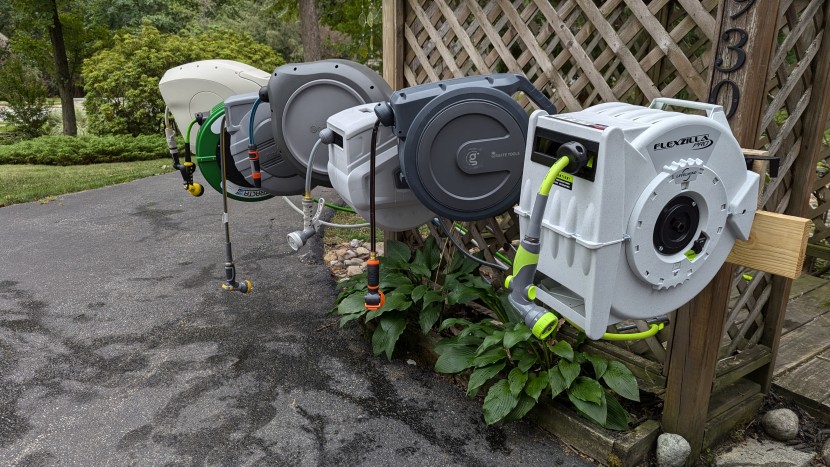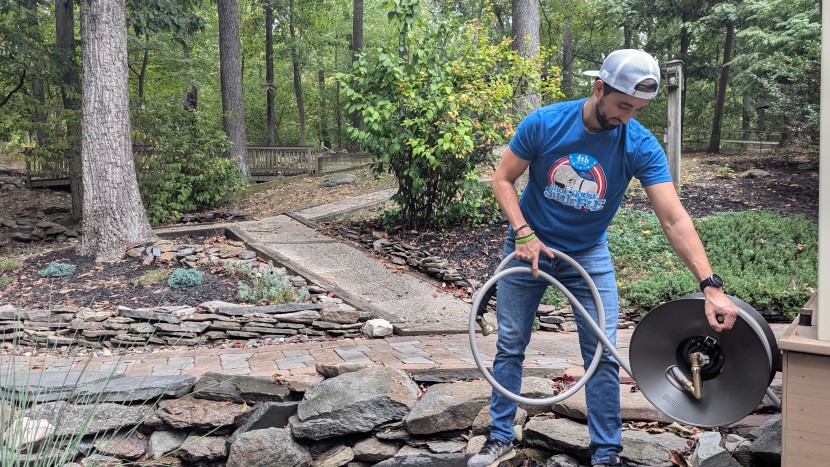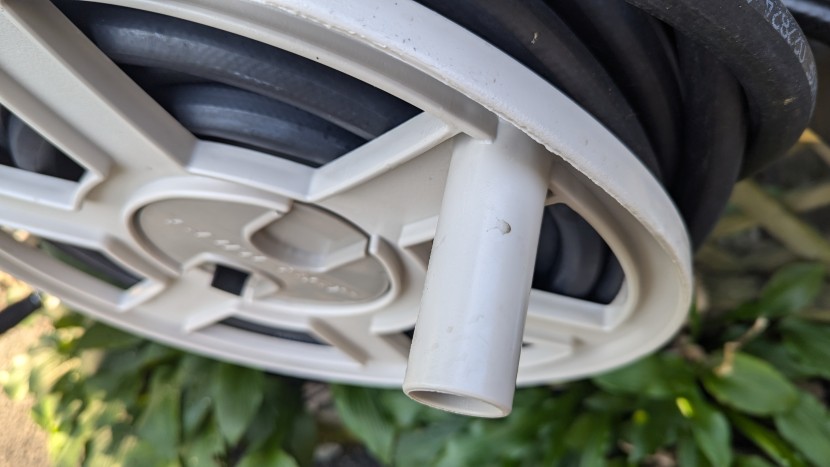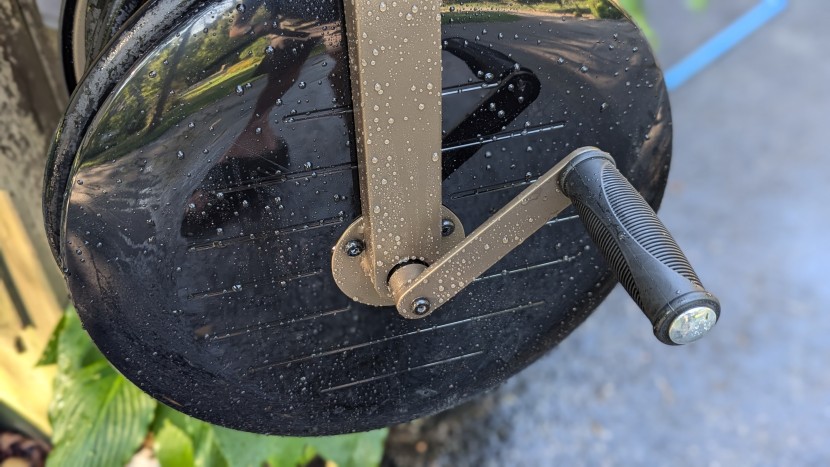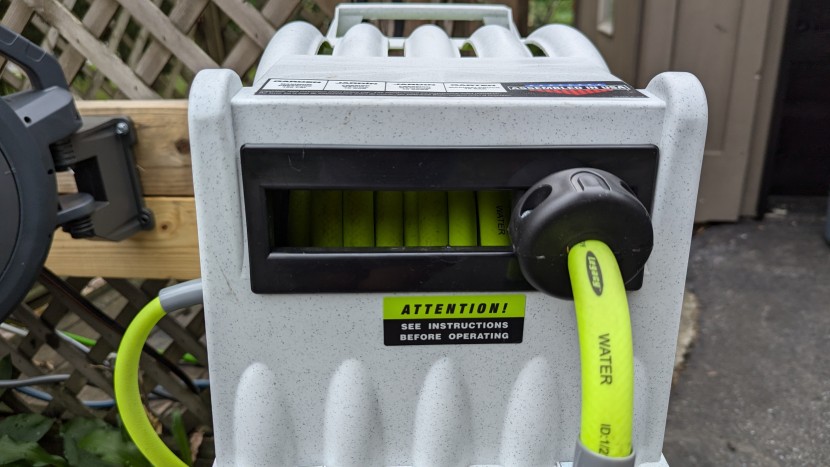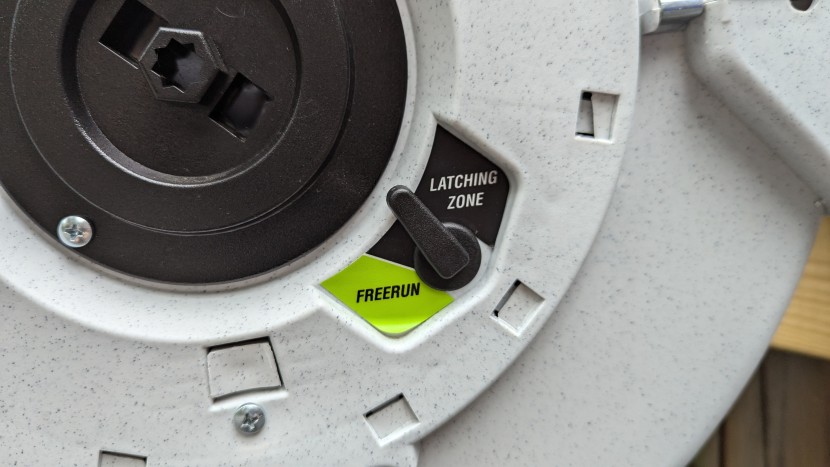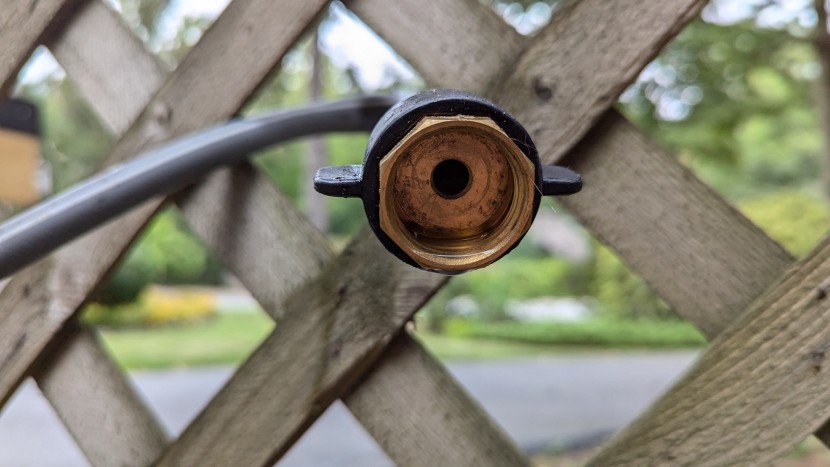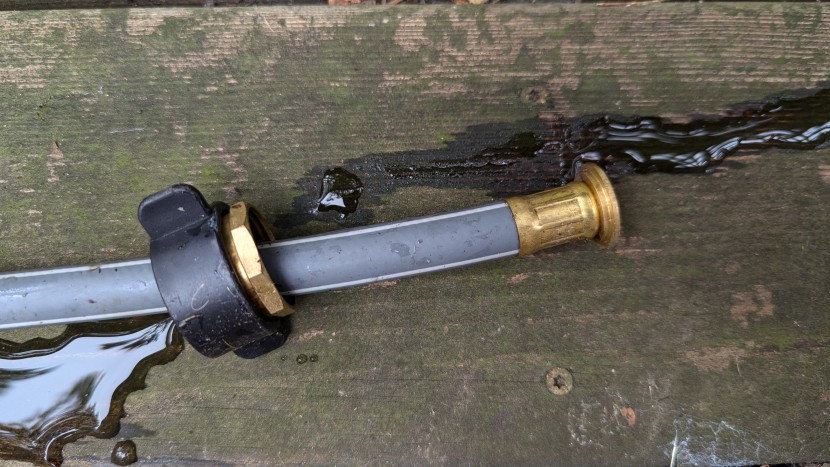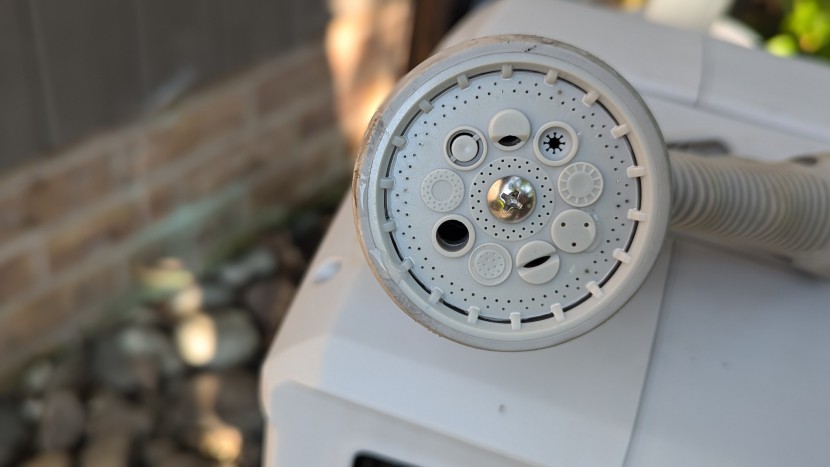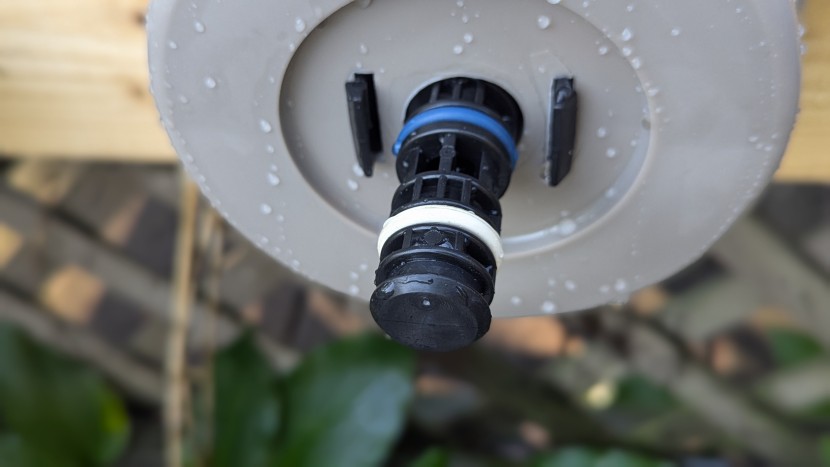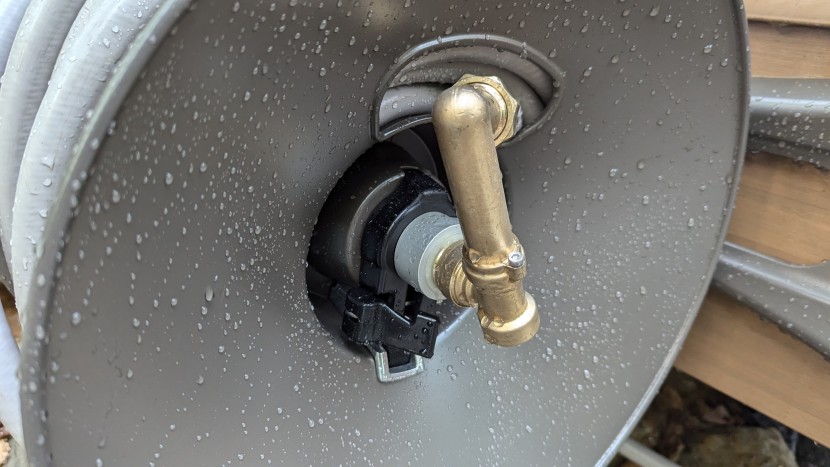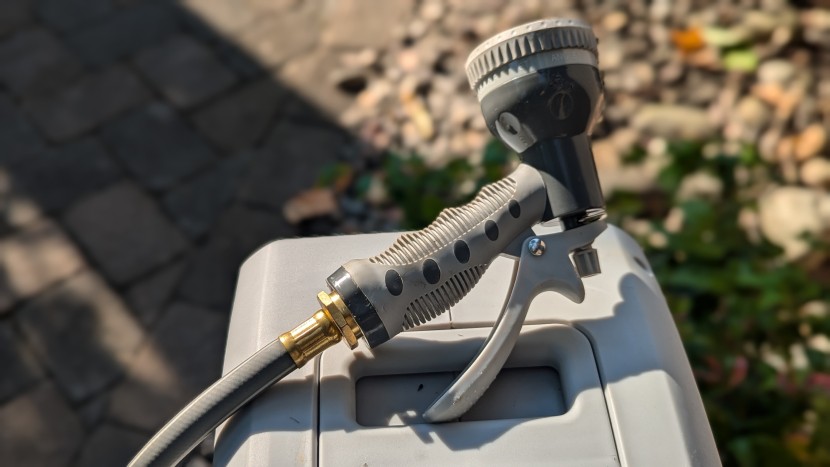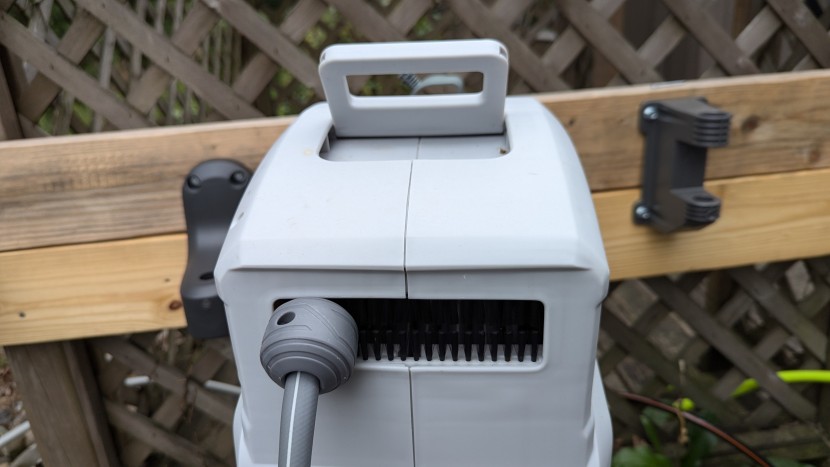We tested the top hose reels over the course of several months in the summer and fall, thoroughly putting their various features and capabilities to the test. We started by considering where and when using a hose reel is most applicable and designed a set of tests, metrics, and scoring standards to uncover each model's strengths and weaknesses. We tested for convenience, performance, and construction quality, as well as assessed the variety of options each model comes with or is available in. Our review and recommendations are the culmination of our findings and analysis after comparing these reels side by side in our daily home gardening chores.
Testing Metrics
We tested hose reels across four primary metrics. Each metric is broken down into several repeatable tests and considerations that we compared each reel to individually. Then, we combined the metric scores for a comprehensive analysis and score.
Convenience In Use
One of the strongest appeals of a hose reel is the convenience it offers over traditional garden hoses. We evaluated how easy each reel was to use first and weighted this metric at 35% of the total score. We tested and compared how easy each reel was to both unwind and wind, noting if it jammed or got stuck, how much strength it took to unwind, and how much power the reel had to pull back in a hose full of water. For retractable reels, we noted the intuitiveness and effectiveness of the latching or locking mechanisms that stop the hose from retracting, as well as the release of these mechanisms when you are ready for it to retract. On manual reels, we assessed the stability of each unit as we wound it up.
Reels that unwound smoothly, without requiring a lot of force, were ideal; we didn't feel like we were fighting them the whole time. Additionally, latching zones that were both audible and tactile, meaning you could feel the clicks through the hose vibrations, were helpful for not pulling through the zone and starting automatic retracting. Reels that combined those sensations along with frequent zones were the most intuitive to use. Most retractable reels tended to bounce around a little, given their single tube connection to their mounts that let them pivot freely. We ensured the hose worked at all angles of the rotation. We tested this on manual reels as well, though many models don't rotate. We also evaluated whether the manual reels were sturdy enough to put up with the weight of a full hose and the force of cranking down on the reel to wind a hose up.
Performance
No matter how easy a reel is to use, if you can't water what you need to, then it isn't a great option. We weighted performance equal to convenience at 35%. Our primary performance tests were checking for leaks, spray performance, movement, and kinking.
Hose reels have twice the connection points of a standard garden hose: two on the connector hose and two from the reel to the nozzle. This means any leaks can have an exponentially detrimental effect. Since reels are often permanently mounted as well, we wanted to make sure that no leaks developed over time as water pressure built in the hose. A steady drip both wastes water and runs up your water bill. We also evaluated the spray performance of each, noting whether the water pressure was impacted by the hose diameter or the type of nozzle, if included. We compared the movement and flexibility of both the hose and the reel; an ideal hose is flexible and easy to move around the yard, while reels themselves are ideally sturdy enough to support the hose and cranking. Lastly, we noted whether any of the hoses were likely to kink or jam either inside the reel or out during use.
Construction Quality
Hose reels are often permanently mounted outside and thus constantly exposed to sun, rain, and cold, which can be hard on materials. We weighted the overall construction quality of each reel at 20% of the overall score based on a variety of assessments and judgments. First, we noted how securely each hose mounts to the wall or post and whether the brackets are metal or plastic. We also looked at overall material and build quality and design, factoring in the sturdiness and thickness of parts that take the most use and abuse. We noted any defects or damage caused throughout our day-to-day testing and constant exposure to the summer sun.
Variety of Options
Lastly, we evaluated the variety of options that each reel model is available in and came with, weighted at 10% of the total score. Our variety metric considered the number of different hose lengths or the total hose length capacity that a reel could support. We also looked at what features are included, such as hoses themselves, nozzles, valves, handles, and more. We considered the ability to winterize the hose easily as part of this metric due to features like quick-release connectors and valves or drainage options. Lastly, we noted down the length of each connector or leader hose, as this gives you more options when mounting the hose around a spigot.
Conclusion
Hose reels are a little more complicated than your average garden hose, but they offer significant advantages in terms of storage and convenience. That said, understanding how each works and whether the specific design and style is right for your needs is an important part of determining whether a hose reel is right for you. We waded through the muddy details and nuances of these hose reels so that you don't have to, and hopefully, our analysis and recommendations provide you with all the information you need to pick out the reel that will work best in your home garden.

